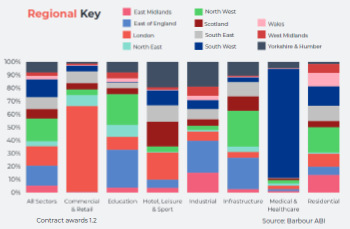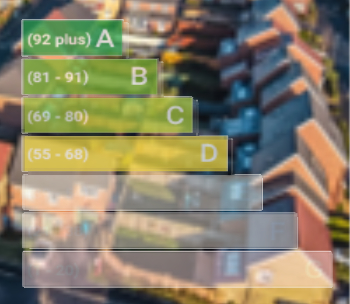Building performance evaluation BPE
BSRIA (Building Services Research and Information Association) define Building Performance Evaluation (BPE) as:
“…a form of Post-Occupancy Evaluation (POE) which can be used at any point in a building's life to assess energy performance, occupant comfort and make comparisons with design targets.”
Building Performance Evaluations are an integral part of a soft landings programme, a strategy adopted to ensure the transition from construction to occupation is ‘bump-free’ and that operational performance is optimised. Soft landings keeps designers and constructors involved with buildings beyond practical completion.
As clients increasingly demand proof of performance, BPE is becoming a requirement on many projects, particularly in the public sector for schools, offices and healthcare buildings. Services can range from a complete evaluation to providing energy monitoring instruments and benchmarking building performance.
BPE generally falls into three elements:
- A forensic walkthrough; an inspection to check the building's operation and whether there are any emerging problems or wasteful operational practices.
- An energy survey; a breakdown of the energy used in a building by type of consumption, for example, heating, air conditioning, and so on.
- Assessment of occupant satisfaction; surveys and interviews of building users and occupiers.
For more information, download BSRIA's introduction to BPE presentation on behalf of the Modern Built Environment KTN for more details.
In September 2015, BSRIA launched Building Performance Evaluation in Non-Domestic Buildings Guide – an introduction to the tests and methods in non-domestic buildings. The guide provides a general introduction to Building Performance Evaluation (BPE) and explains why it is important and how it can be carried out. BPE is a key element of the BSRIA soft landings framework intended to help deliver buildings that are an effective and efficient and perform as expected. The guide focuses on new, existing and refurbished non-domestic buildings and aims to inform those involved in the design, construction, operation and/or management of a building about its current performance.
NB The RIBA Passivhaus Overlay, published by the RIBA in 2022, states in relation to Building Performance Evaluation (BPE): “The process of gathering quantitative and qualitative data and interpreting that information in order to draw conclusions about the performance of one or more of a building’s attributes. It is advantageous to undertake BPE to gather data about the existing building. BS:40101 (BSI, 2022) establishes a framework for undertaking Building Performance Evaluation. It can be useful to review energy use (e.g. CIBSE TM22) and occupant satisfaction (BUS), and then, as appropriate, follow up with temperature and humidity monitoring, thermographic surveys and air leakage tests. This information can be used for designing out existing problems (changing control systems, updating technology, and training occupants), providing feedback to the project team, and informing Seasonal Commissioning of mechanical/electrical equipment.”
--BSRIA
[edit] Related articles on Designing Buildings
- Building performance.
- Building performance evaluation in domestic buildings.
- Building performance evaluation in non-domestic buildings guide – an introduction to the tests and methods in non-domestic buildings.
- Building performance metrics.
- Building use studies (BUS).
- Built2Spec.
- Extended aftercare.
- Handover to client.
- Initial aftercare.
- Lessons learned report.
- Medical Research Council Laboratory of Molecular Biology soft landings project.
- Performance of exemplar buildings in use: Bridging the performance gap FB 78.
- Post occupancy evaluation.
- Post occupancy evaluation process.
- Post project review.
- Performance in use.
- Smart meters and building performance evaluation.
- Soft landings.
- Soft Landings for owners.
Featured articles and news
Spring Statement 2025 with reactions from industry
Confirming previously announced funding, and welfare changes amid adjusted growth forecast.
Scottish Government responds to Grenfell report
As fund for unsafe cladding assessments is launched.
CLC and BSR process map for HRB approvals
One of the initial outputs of their weekly BSR meetings.
Architects Academy at an insulation manufacturing facility
Programme of technical engagement for aspiring designers.
Building Safety Levy technical consultation response
Details of the planned levy now due in 2026.
Great British Energy install solar on school and NHS sites
200 schools and 200 NHS sites to get solar systems, as first project of the newly formed government initiative.
600 million for 60,000 more skilled construction workers
Announced by Treasury ahead of the Spring Statement.
The restoration of the novelist’s birthplace in Eastwood.
Life Critical Fire Safety External Wall System LCFS EWS
Breaking down what is meant by this now often used term.
PAC report on the Remediation of Dangerous Cladding
Recommendations on workforce, transparency, support, insurance, funding, fraud and mismanagement.
New towns, expanded settlements and housing delivery
Modular inquiry asks if new towns and expanded settlements are an effective means of delivering housing.
Building Engineering Business Survey Q1 2025
Survey shows growth remains flat as skill shortages and volatile pricing persist.
Construction contract awards remain buoyant
Infrastructure up but residential struggles.
Warm Homes Plan and existing energy bill support policies
Breaking down what existing policies are and what they do.
A dynamic brand built for impact stitched into BSRIA’s building fabric.






















